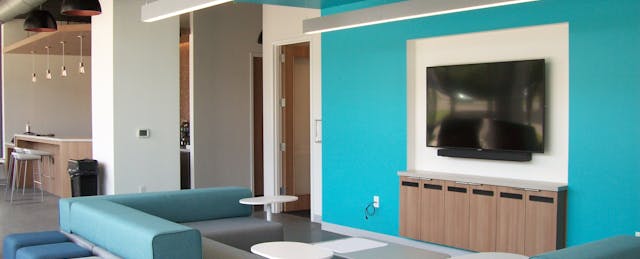In theory, online courses have the potential to untether learning from location, freeing students to study anywhere they can pick up a Wi-Fi signal.
Yet in practice, that’s not how they tend to behave.
“Most students who attend an online program still attend a program that's within 50 to 100 miles of their home,” says Dave Jarrat, senior vice president of strategic engagement and growth at InsideTrack, an organization that provides coaching services at colleges.
Recognizing this paradox, a few online course providers have opened physical campus centers designed to offer students a space to interact both with each other and employees who provide support services. They’re a mashup of a co-working space, an administrative center and a library—sans the books.
In June, Capella University opened its first campus center, in Atlanta, to provide students of its online classes with room to study and the opportunity to meet in person with enrollment counselors and academic advisors. Earlier this year, 2U expanded a partnership with WeWork, the co-working giant, that lets students use the facilities if they are taking online graduate programs and short courses through universities with which 2U partners. And this week, Strayer University announced the opening of its latest “hybrid campus,” where students can study together, participate in job search training programs and make appointments with staff members.
Providing convenience was one motivator for Strayer, whose hybrid campuses are intentionally placed in downtown areas so that employed adults can easily access them before or after work, says Cale Holman, chief academic officer and provost.
Another goal was improving academic performance and degree completion.
“We have seen students who live geographically near our campuses typically perform better than students who don’t,” Holman says. “Even if they aren’t taking a course physically at that campus, there’s the access to services—we think that certainly contributes.”
Strayer University, which is more than 120 years old, has always maintained physical classroom facilities, and some of its hybrid campuses are simply renovated versions of those traditional structures. Indeed, the concept of blending online and in-person instruction is widespread, says Marie Cini, president of the Council for Adult and Experiential Learning.
But she calls combining online coursework with in-person support services “innovative.”
“This model is not so common, but it’s an idea that has been discussed in online circles for some time. Now that Strayer is growing the model, you’ll see more follow,” she said in an email interview.
The new physical spaces could boost brand awareness, Jarrat says. Additionally, these outposts may attract students who “who want direct human interaction, in person.”
“With online shopping, why does Apple have Apple stores?” he says. “They like you to be able to go in and experience things firsthand, ask a lot of questions. It provides a richer experience.”
The benefits for students in having more opportunities to interact while completing coursework may include improved peer-to-peer learning and stronger career networks.
“With more and more students coming in who are first generation or from low-income backgrounds, one of the best ways to help them build social capital for their carers is making sure they’re connected to their classmates,” Jarrat says.


